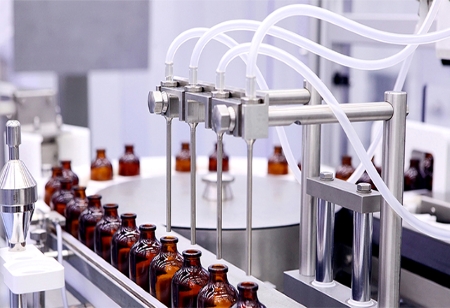Darshan. K, India Pharma Outlook Team | Monday, 30 October 2023

In the intricate landscape of modern healthcare, the optimization of medical device safety is not merely an aspiration; it is an imperative driven by the integration of advanced technologies and the multifaceted demands of a diverse user base. The fulcrum upon which this imperative pivot is the esoteric realm of Human Factors Engineering (HFE), an intricate and multidisciplinary framework designed to transcend the facile boundaries of device usability. This article endeavors to delve into the profound intricacies of the symbiotic relationship between HFE and medical device safety.
Complexity of Device Usability Beneath the superficial veneer of device usability analysis lies a complex and multi-dimensional paradigm. It necessitates the use of ethnographic methodologies, immersive contextual analysis, and a granular understanding of user behavior, encompassing the entire spectrum of healthcare professionals and patients. The underpinning ideology is not merely optimizing usability but fostering seamless integration of the device within the broader healthcare ecosystem. "...human factors engineering is utilized to optimize to users' capabilities while minimizing the negative consequences of their limitations." -Michael Lau, Ph.D., Director of Human Factors. In the realm of healthcare, EHR systems are notorious for their complexity. These systems must cater to a broad spectrum of users, including physicians, nurses, administrative staff, and even patients who access their own medical records. Human Factors Engineering plays a pivotal role in simplifying EHR interfaces, ensuring that healthcare professionals can efficiently navigate and input patient data while minimizing the risk of data entry errors. For instance, well-designed EHR systems might employ intuitive dropdown menus, standardized icons, and context-specific prompts, making them more user-friendly and error-resistant. Pedagogy and Documentation as Cognitive Science The design of educational paradigms and accompanying documentation transcends mere rhetoric in the HFE lexicon. This realm harnesses cognitive science principles to craft instruction manuals and training programs that synchronize with the idiosyncrasies of human information processing. It is the sublime art of creating cognitive alignment, ensuring that users seamlessly absorb the information essential for device operation and error reduction. Smart infusion pumps are employed in healthcare settings to administer precise doses of medication and fluids to patients. HFE is utilized to design these devices with advanced features, such as dose error reduction software. This software calculates and verifies the correct medication dosage, cross-referencing it with the patient's weight and medical history to mitigate human errors in medication administration. It also alerts healthcare professionals to potential issues, reducing the risk of dosing errors. Inclusivity through Design Diversification Medical devices cater to a kaleidoscopic array of users encompassing different ages, cognitive capabilities, and physical constraints. HFE goes a step further by contemplating the universal design paradigm, ensuring that devices are not only accessible but also cater to the unique needs of users. This all-encompassing vision diminishes the risk of errors stemming from the diversity of users. Many medical devices have integrated accessibility features to cater to a diverse user base. For instance, glucose meters for diabetics often include large, high-contrast screens and spoken instructions for those with visual impairments. Similarly, hearing-impaired patients may use hearing aid-compatible stethoscopes. These features are rooted in HFE, ensuring that medical devices are accessible and usable by individuals with varying physical and cognitive abilities. Adverse events related to medical devices, such as device-related infections or misdiagnoses, can have serious consequences for patients. Integrating HFE principles into device design and usage can help mitigate the occurrence of such events, ultimately leading to better patient safety. Medical devices, such as infusion pumps and medication dispensing systems, play a crucial role in medication administration.
HFE ensures that these devices are designed to minimize dosing errors, thus improving patient safety. For instance, color-coded interfaces and intuitive controls can reduce the likelihood of medication mix-ups. Healthcare professionals frequently use complex medical equipment under time constraints and high-pressure situations. HFE helps alleviate stress by simplifying device interfaces and making the operation of devices more intuitive. This can lead to more accurate and confident device use. HFE significantly enhances the overall safety and effectiveness of medical devices. As technology continues to advance and the healthcare landscape evolves, the integration of HFE principles into device design, training, and documentation is more crucial than ever.